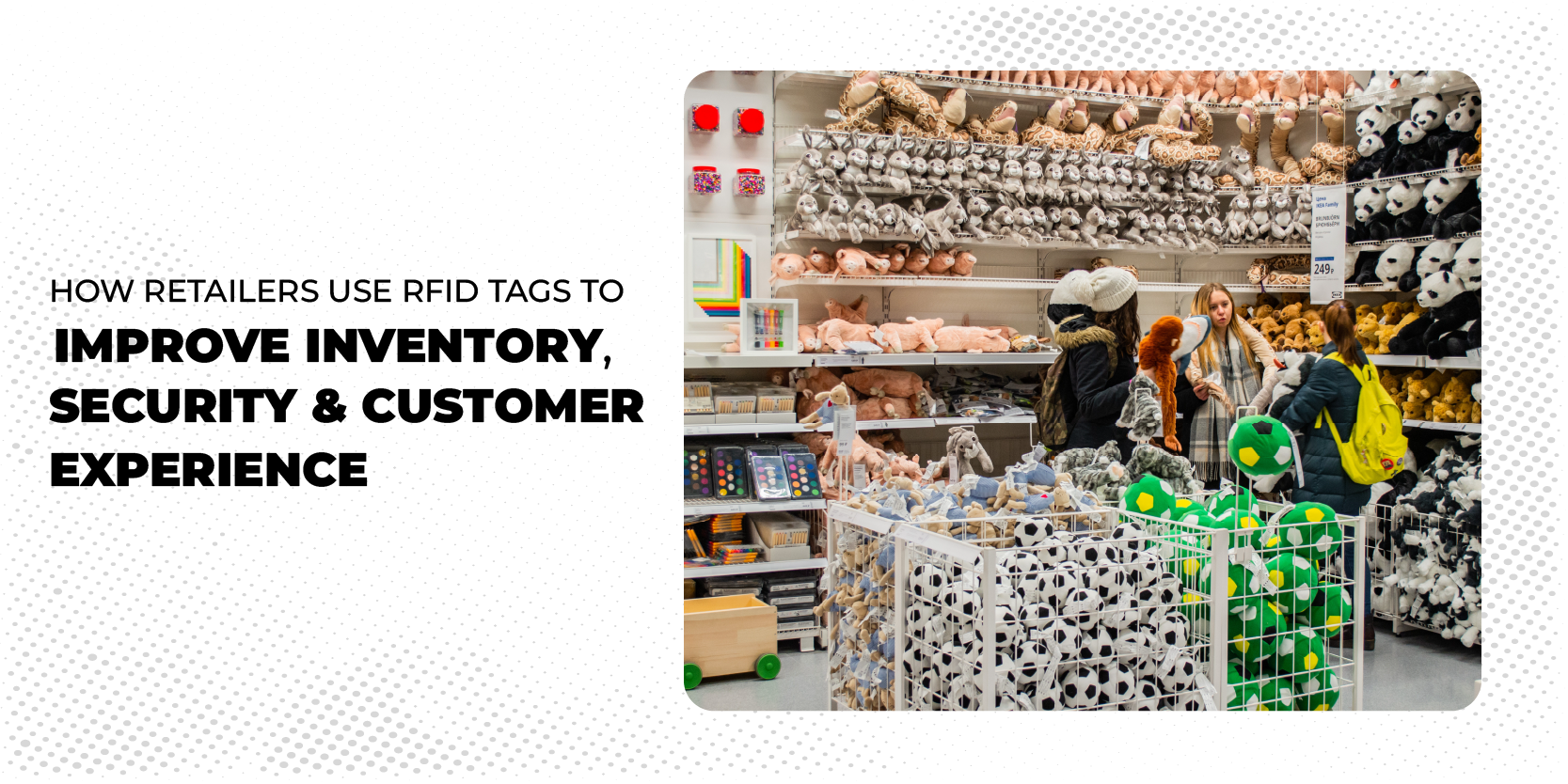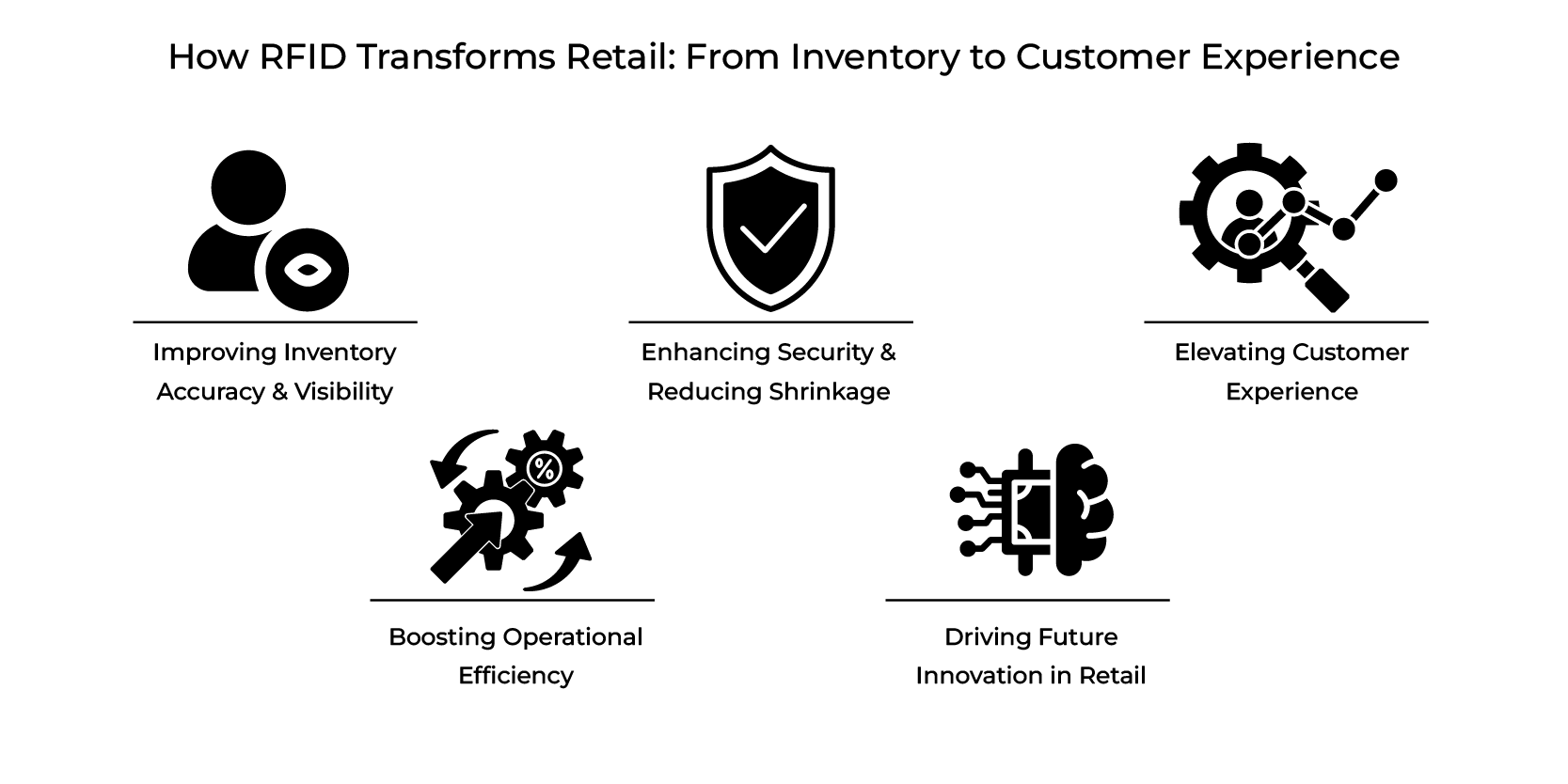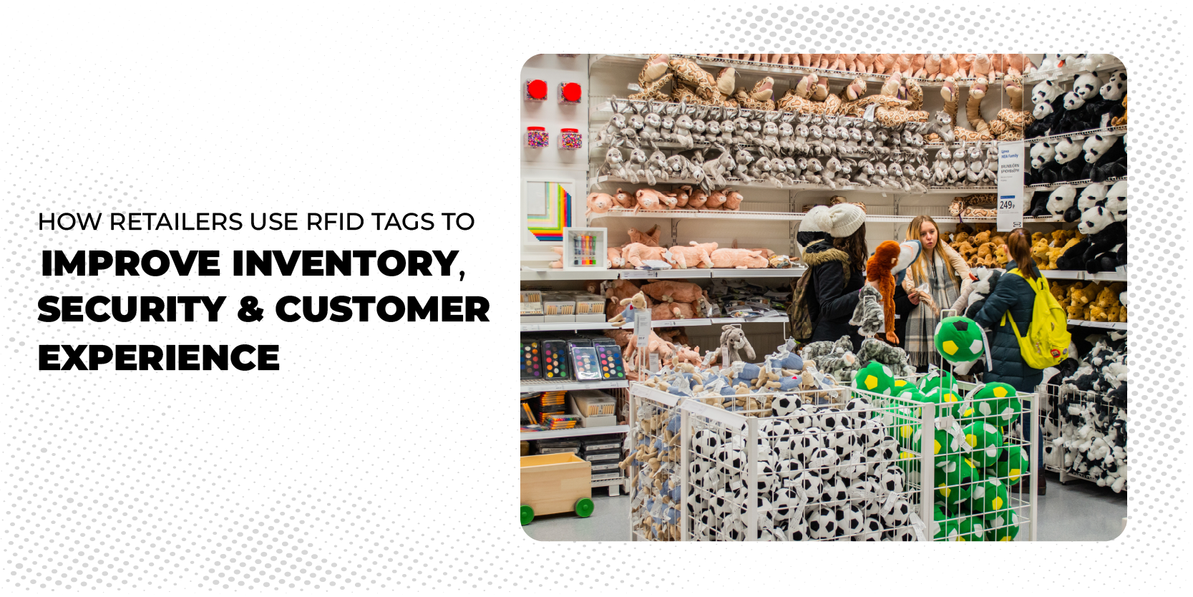How Retailers Use RFID Tags to Improve Inventory, Security & Customer Experience
Introduction
Retail has always been a fast-moving industry, where customer expectations are high, and competition is fierce. Yet, retailers face persistent challenges: stockouts that frustrate customers, shrinkage that eats into profits, and inefficiencies that delay service. These hurdles often lead to poor shopping experiences and reduced customer loyalty.

Enter RFID (Radio Frequency Identification) technology—a game-changer for modern retail. Unlike traditional barcodes, RFID offers real-time visibility and automation across the entire supply chain. From warehouses to shop floors, RFID ensures that products are tracked with precision, secured against theft, and always available for customers.
Thesis: RFID tags empower retailers to achieve better inventory control, stronger security, and enhanced customer experiences—making them an essential tool for future-ready retail.
Understanding RFID in Retail
RFID tags are tiny devices that use radio waves to transmit data about an item. Unlike barcodes, which require line-of-sight scanning, RFID tags can be read automatically—even through packaging or when multiple items are scanned at once. This makes RFID in retail a powerful tool for achieving faster, more accurate item tracking across stores and warehouses.
Key Components of an RFID System:
- RFID Tags: Attached to products, carrying unique digital identities.
- RFID Readers: Devices that capture tag data using radio waves.
- Antennas: Boost communication between tags and readers.
- Software Platforms: Process data to deliver insights on inventory, security, and operations.
Today, global retailers such as Walmart have adopted RFID to gain competitive advantages in supply chain efficiency, inventory accuracy, and customer engagement.
Improving Inventory Accuracy & Visibility
One of RFID’s biggest strengths is its ability to deliver real-time inventory visibility. Retailers no longer have to guess whether a product is in stock—RFID provides precise, item-level tracking.
Real-Time Tracking: RFID in retail provides instant visibility into stock levels across stores and warehouses, helping staff and managers make data-driven decisions without relying on estimates or manual checks.
Automated Replenishment: RFID systems automatically notify staff when shelves are low, preventing out-of-stock situations and ensuring popular products are always available for customers without delays.
Faster Cycle Counts: Using handheld RFID readers, employees can count thousands of items within minutes, dramatically reducing labor costs and replacing slow, error-prone manual barcode scans.
Omnichannel Advantage: Accurate RFID-driven inventory enables seamless services like Buy Online, Pick Up In Store (BOPIS) and curbside pickup, ensuring customers always receive the items they ordered without disappointment.
Enhancing Security & Reducing Shrinkage
Shrinkage—loss of products due to theft, fraud, or errors—remains a major concern in retail. RFID technology provides powerful tools to combat it.
Anti-Theft Solutions: RFID in retail integrates with Electronic Article Surveillance (EAS) systems, triggering alerts if unpaid items leave the store. This proactive approach significantly reduces shoplifting incidents while ensuring a smooth shopping experience for genuine customers.
Internal Theft Prevention: RFID enables item-level tracking, logging each product’s movement from the stockroom to the sales floor. This transparency discourages employee theft and helps managers quickly identify discrepancies, improving accountability and overall operational security across retail environments.
Protecting High-Value Items: Luxury fashion, electronics, and accessories benefit from RFID tagging, which offers real-time monitoring and alerts. Retailers gain visibility into where these items are located at all times, reducing risks associated with theft or accidental misplacement.
Fraud Prevention in Returns: By linking returned products to their original RFID tags, retailers can verify authenticity instantly. This prevents fraudulent claims, counterfeit returns, and unauthorized exchanges, saving businesses significant revenue losses while strengthening customer trust.

Elevating Customer Experience
RFID isn’t just about operations—it directly enhances how customers shop.
Faster Checkouts: RFID-enabled self-checkout or frictionless checkout systems allow multiple items to be scanned instantly, cutting waiting times dramatically and giving shoppers a faster, more convenient checkout process.
Better In-Store Experience: Store associates equipped with RFID readers can instantly check product availability, sizes, and locations, enabling them to assist customers quickly and efficiently, which improves service quality and satisfaction.
Smart Fitting Rooms: RFID-enabled mirrors detect items brought inside, automatically suggesting alternate sizes, colors, or accessories. This interactive experience creates personalization and encourages higher customer engagement and upselling opportunities.
Personalized Marketing: Data collected through RFID in retail reveals customer preferences and shopping patterns, helping retailers create tailored promotions, loyalty rewards, and personalized offers that strengthen relationships and drive repeat purchases.
Operational Efficiency Gains
Beyond inventory and customer-facing improvements, RFID delivers measurable efficiency across retail operations.
Labor Savings: RFID minimizes the need for manual stock counts and repetitive tasks, allowing employees to spend more time assisting customers and focusing on high-value responsibilities instead of inventory checks.
Faster Receiving: RFID portals installed at warehouses and store backrooms automatically scan incoming shipments, verifying accuracy in seconds and streamlining receiving, dispatching, and restocking processes without manual intervention.
Product Lifecycle Visibility: RFID tags track products through the entire journey—from manufacturer to warehouse, store, and customer, providing retailers with end-to-end transparency and data for better supply chain decisions.
Future of RFID in Retail: Smarter, Sustainable, and Frictionless
The future of RFID in retail lies in combining the technology with IoT sensors, AI, and advanced analytics to create smarter operations and better customer experiences. Smart shelves powered by RFID and IoT can automatically detect low stock levels, while predictive analytics use RFID data for demand forecasting and intelligent replenishment. Beyond efficiency, RFID also supports sustainability by enabling reverse logistics and tracking products throughout their lifecycle for recycling and reuse. At the customer-facing level, cashier-less, frictionless checkout stores.
Conclusion
RFID technology is redefining retail by solving some of the industry’s most pressing challenges. From inventory accuracy to loss prevention and customer engagement, RFID delivers measurable improvements that drive both efficiency and profitability.
Recent Posts
-
How RFID Anti-Theft Tags Revolutionize the Retail Industry
Introduction Retail theft and inventory shrinkage are challenges that every store owner faces. Wheth …Dec 22nd 2025 -
RFID Portals in Manufacturing: Tracking Work-in-Progress Efficiently
Introduction Manufacturing thrives on precision and timing. Every part, component, and subassembly m …Dec 15th 2025 -
RF Shielding Explained: Types, Applications, and Benefits
Introduction RF shielding is essential for protecting devices from electromagnetic interference. Thi …Dec 8th 2025




